Reviews
As Detroit’s Reputation for Emerging Art Grows, a Wildly Ambitious Citywide Festival Shows a New Generation of Artists on the Rise
A powerful focus on place actually opened channels to an international dialogue.
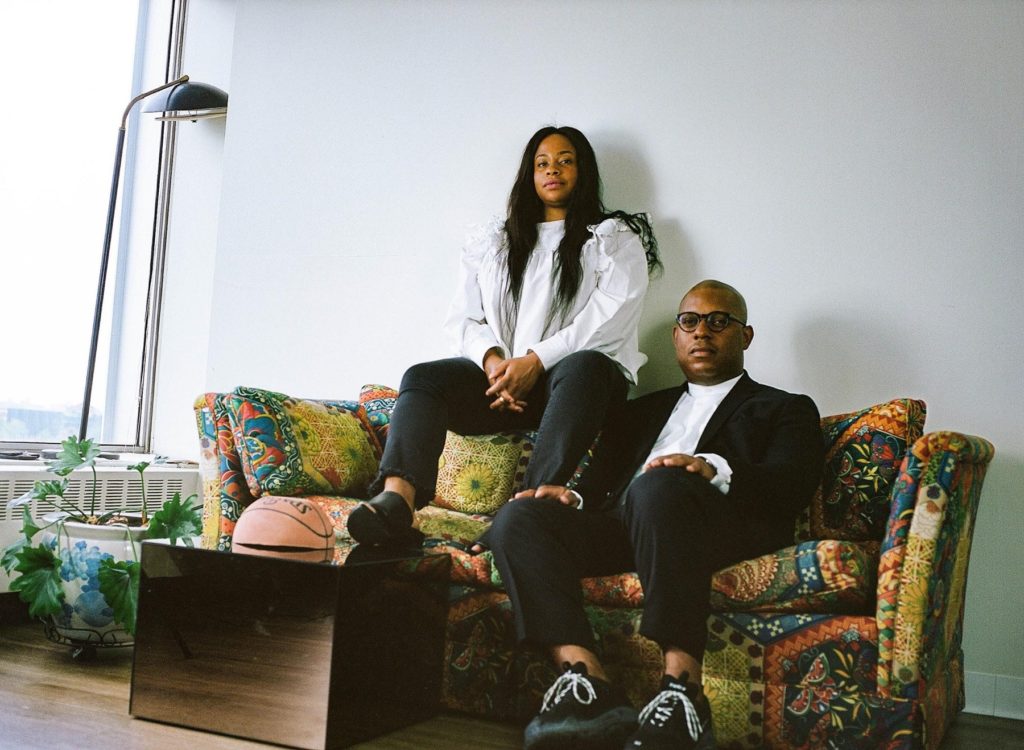
A powerful focus on place actually opened channels to an international dialogue.

Terence Trouillot

The second edition of Detroit Art Week (DAW)—organized by its co-founders Aleiya Lindsey and Amani Olu—was a jam-packed, exhausting, and thrilling affair. The event, which took place July 17–21, included 36 exhibition openings, 13 performances, 7 panel discussions, works by 150 artists from Detroit and all over the world, and was host to many, many parties and studio visits. But, apart from the scale and expanded programming, this particular iteration truly hit home (or at least attempted to) Detroit’s rapid ascendancy in the art world as an international hub for cultural exchange.
A fascinating facet of the program this year was its emphasis on place, both physical (e.g. hotel room, house, gallery space, neighborhood, city) and conceptual (e.g. identity, culture, refuge, escape, darkness). This manifested through themes of displacement, gentrification, and race—hot button topics in Detroit especially, but also across the globe—but resulted in a critical mass of works that, intriguingly, focused on site-specificity and materiality not just to honor local histories, but as a means to find points of symbolic connection between Detroit and the outside world.
One of the many highlights of DAW was “Young Curators, New Ideas V” (YCNIV), the fifth in a series of group exhibitions first founded in New York in 2008 by Olu. YCNIV showcased a medley of small exhibitions by 12 independent curators inside the Trumbull & Porter Hotel in the Corktown neighborhood.
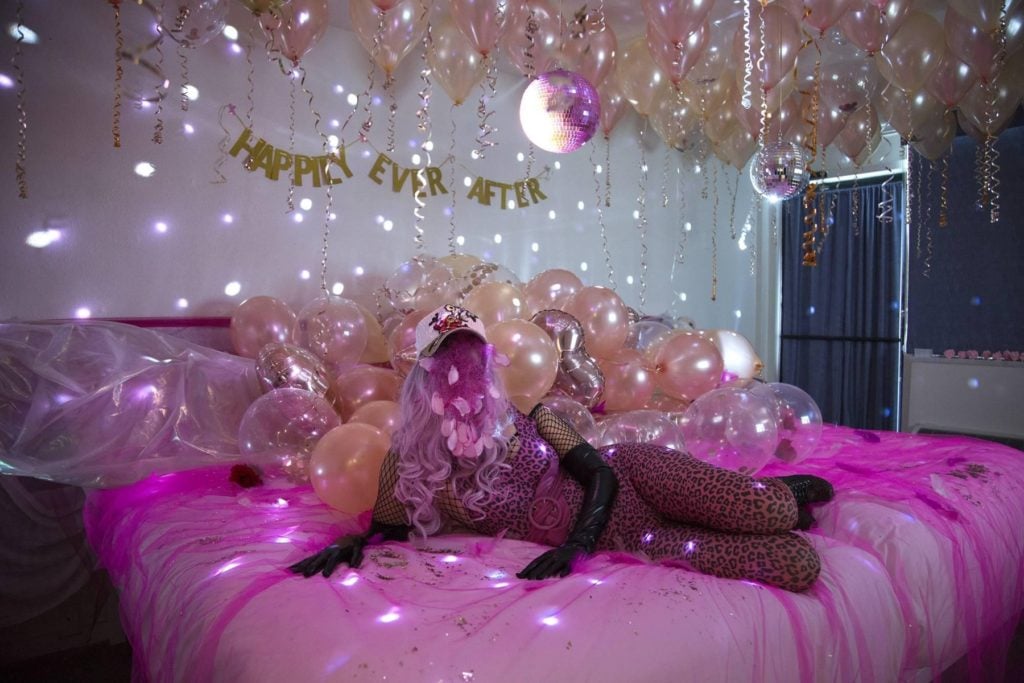
Katarzyna Perlak, Wish Landscapes (2019). Image courtesy of Detroit Art Week. Photo: Paul-David Rearick.
Each invited curator took over a hotel room on the first floor and presented works by artists who explore issues of race, identity, gender, sexuality, and gentrification. The curatorial projects transformed each room into a site-specific installation that often utilized or made reference to the space’s inherent function as a bedroom or hotel room.
This was true of the event’s highlight this year, “Wish Landscapes,” curated by Kasia Sobucka, the founding director of the London-based arts nonprofit Arts Territory. She presented the work of Polish artist Katarzyna Perlak, who decorated the hotel room as a honeymoon suite, festooned with pink balloons and glitter all over the bed and a “Happily Ever After” garland attached to the wall.
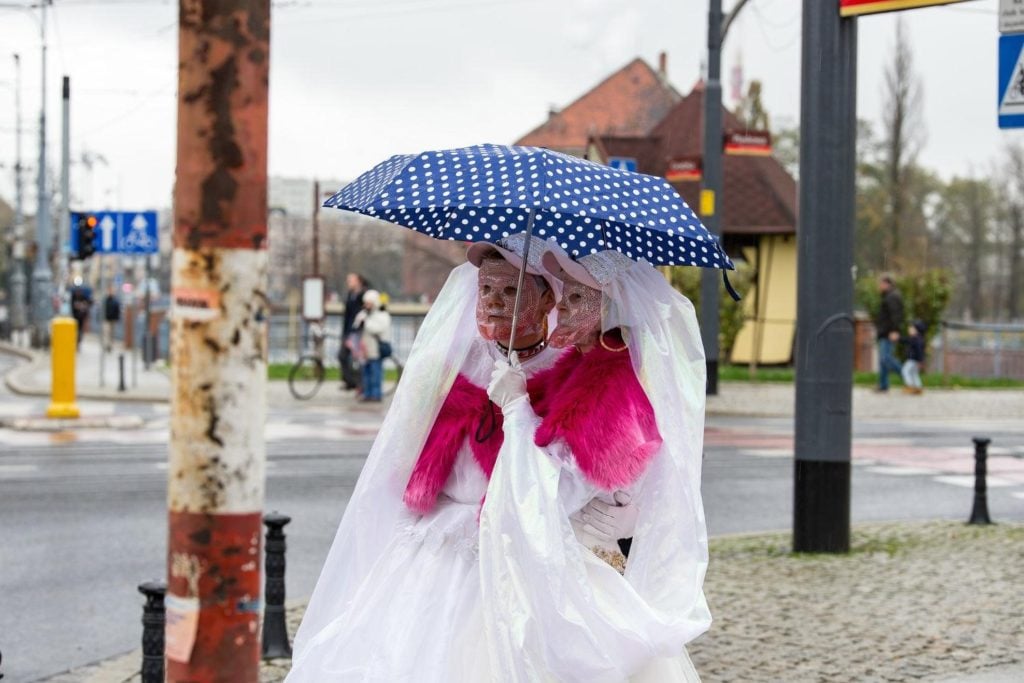
Katarzyna Perlak, Happily Ever After (2019), Video Still. Courtesy of Detroit Art Week.
Sobucka’s space also featured a 20-minute video aptly titled Happily Ever After (2019) that documents the performance of a fictional lesbian wedding interspersed with footage of Polish nationalists protesting at Pride parades in various different cities across Poland. Perlak’s queering of national traditions (the marriage was performed as a traditional Polish wedding) as an act of resistance is all the more trenchant as same sex marriages are outlawed in Poland. But the work also plays with notions of utopia and hope, creating an imaginative safe space within the hotel where same-sex marriages can ostensibly occur openly and not in secret.
This idea of an imaginary safe space was also at play in the work of Pamela Council, presented at Red Bull Arts Detroit (on view through August 25). One of three artists spotlighted in the Red Bull Residency Art Exhibition, Council’s exhibition also deals pointedly with the idea of personal history and trauma, however here with a generous dose of humor and camp.
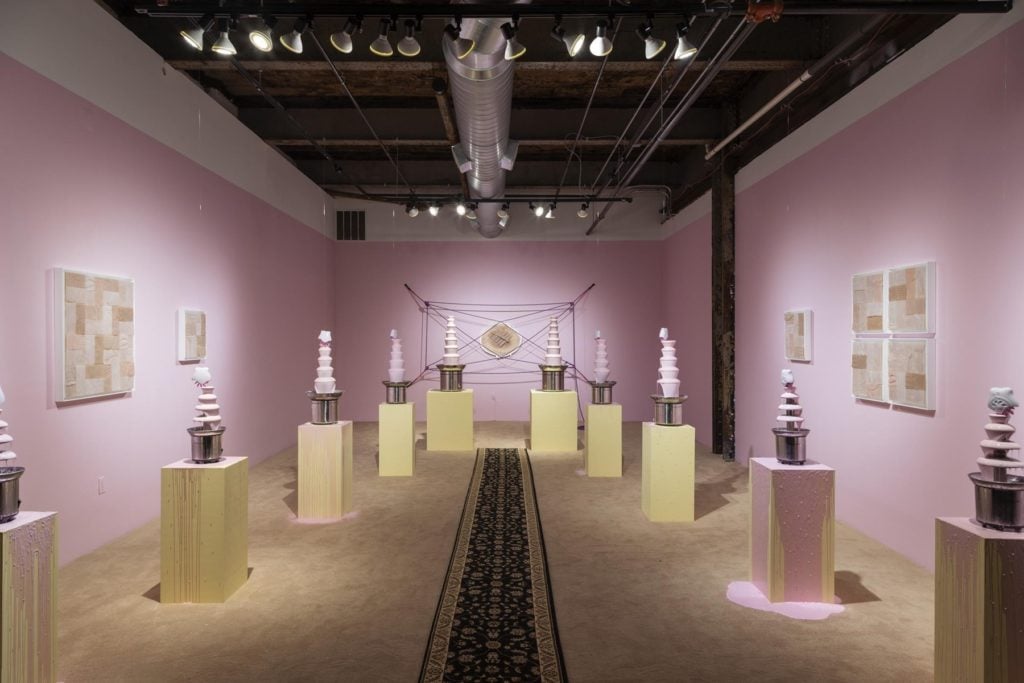
Pamela Council, BLAXIDERMY PINK (2019). Image Courtesy of Red Bull Arts.
In BLAXIDERMY PINK (2019), Council presents a shrine to her 14-year-old self: a delicate pink space with a plush carpet; fondue fountains spewing gallons of Luster’s Pink Moisturizing Hair Lotion (an African American hair product that Council remembers fondly from childhood); a Sqweel 2 oral-sex toy dangling overhead on a string; mounted field hockey sticks that the artist used as weapon for self-defense against child abuse; and silicone reliefs of the soles of her favorite sneakers.
In effect, the space is filled with objects that hold emotional weight and have their own relations to a particular place and time for the artist. Council has created an environment to house these transitional objects (i.e. objects that provide psychological comfort), in turn building a “transitional” space for herself and for her viewers to experience.
The role of objects as markers of culture and history shaping identities and stories was a theme elsewhere. Consider Bree Gant’s piece Otherlogue (2019), part of “Show Me Your Shelves!,” an exhibition organized by Contemporary And (C&), a magazine and website that focuses on contemporary art from Africa and its diaspora, at different branches of the Detroit Public Library.
At the Skillman Library, the Detroit-based Gant’s piece consisted of a scatter of many empty glass jars, one empty bottle of Hennesey, mussels, and cowrie shells, evoking the story of “Eez,” a fictional black female artist in Detroit. The scene is ritualistic in tone, the glass jars looking to have been used to cast protective spells, a common trope in many traditions of folk magic.
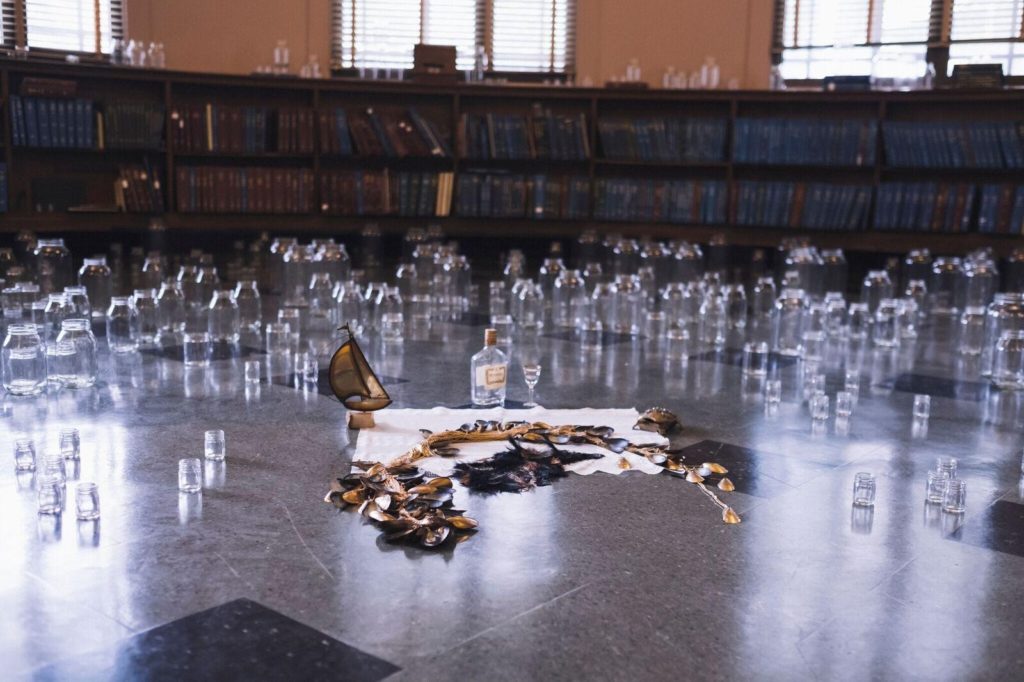
Bree Gant, Otherlogue (2019) at the Skillman Library. Photo: Kashina Dowridge
Perhaps the exhibition that calls most attention to this idea of objecthood (and more specifically material) as a stand-in for identity and place is “Landlord Colors: On Art, Economy, and Materiality” (on view through October 6). Presented at Cranbrook Art Museum, “Landlord Colors” —which borrows its title from a term coined by John Baldessari to describe inexpensive paint and unappealing colors—presents the work of five international art scenes that experienced times of crisis: Detroit, starting from the 1967 Rebellion and ranging to the present; Arte Povera in Italy, from the 1960s to the 1980s; South Korea in the authoritarian 1970s; Cuba during the fall of the Soviet Union in the 1990s; and finally Greece since its financial crisis in 2009.
The show, which is exceptionally researched and curated by senior curator Laura Mott, takes a look at the regional histories of five distinct cities and how artists responded to the social and economic unrest of the time through eclectic and often discarded materials (wood, marble, concrete, cloth, etc.).
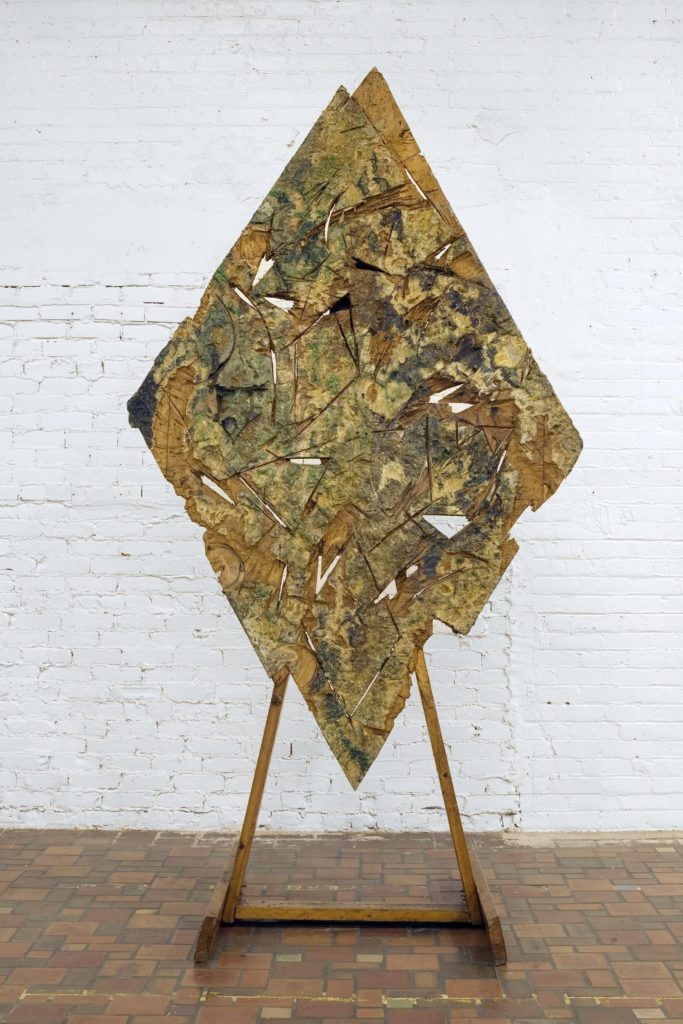
Gordon Newton, Diamond Follow (1975). Courtesy of Cranbrook Art Museum.
Works by Detroit artists Gordon Newton, Tyree Guyton, and Charles McGee are all created from leftover materials from abandoned homes in various neighborhoods of Detroit. Some objects are reworked and manipulated, such as Newton’s Diamond Follow (1975), a large plywood panel with notable cutouts and paint marks. Others are simply left untouched, such as Charles McGee’s “Urban Extract” series, for which the artist displays large architectural fragments of buildings and homes as paintings or sculptures.
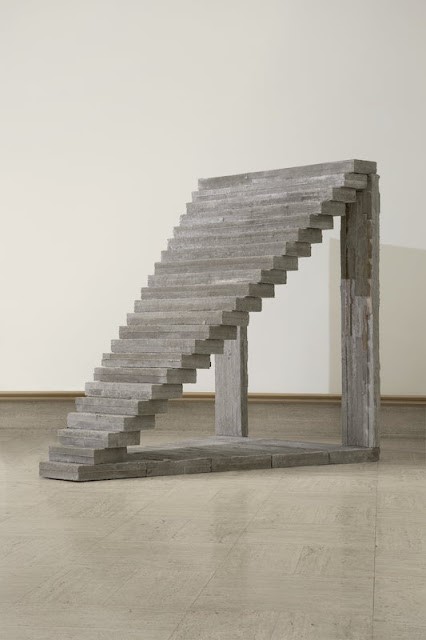
Kostis Velonis, Assembly of a Tenement (polykatoikia) (2019). Courtesy the artist.
Fast forwarding 40 years later, the show illustrates how Greek artists Andreas Lolis and Kostis Velonis have hit upon similar strategies, except here in a vernacular that speaks to the history of Athens. In Assembly of a Tenement (2019), Velonis recreates a section of an amphitheater out of concrete.
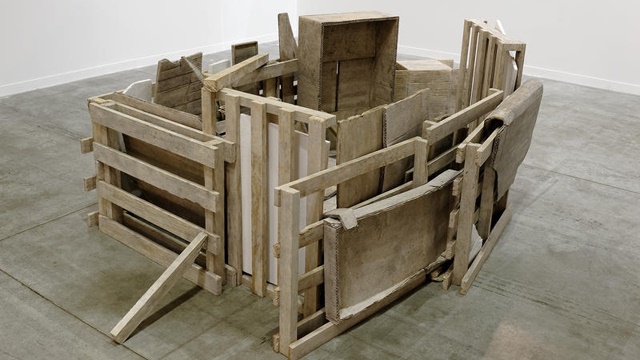
Andreas Lolis, Permanent Residence (2015).
Alternatively, in Permanent Residence (2015), Lolis makes use of discarded packaging materials such as cardboard boxes and wooden pallets, examples of detritus often used by homeless immigrants to build makeshift homes. However, on closer inspection, in his sculpture these transient objects are actually crafted out of marble, hearkening back to the materials of ancient Greek sculpture, and through it, to questions about the symbolism of national identity.
Complementing “Landlord Colors” is “Material Detroit,” a performance and public art series organized by Mott, Taylor Renee Aldridge (co-founder of the website ARTS.BLACK), and Ryan Myers-Johnson (executive director and curator at Sidewalk Detroit). It featured an extensive program of performances throughout the city, including Alma (Soul), a tribute in music to Detroit’s 1967 Rebellion, which, reflecting Detroit Art Week’s local-international dialogue, was orchestrated by Susana Pilar, who is actually an Afro-Cuban artist.
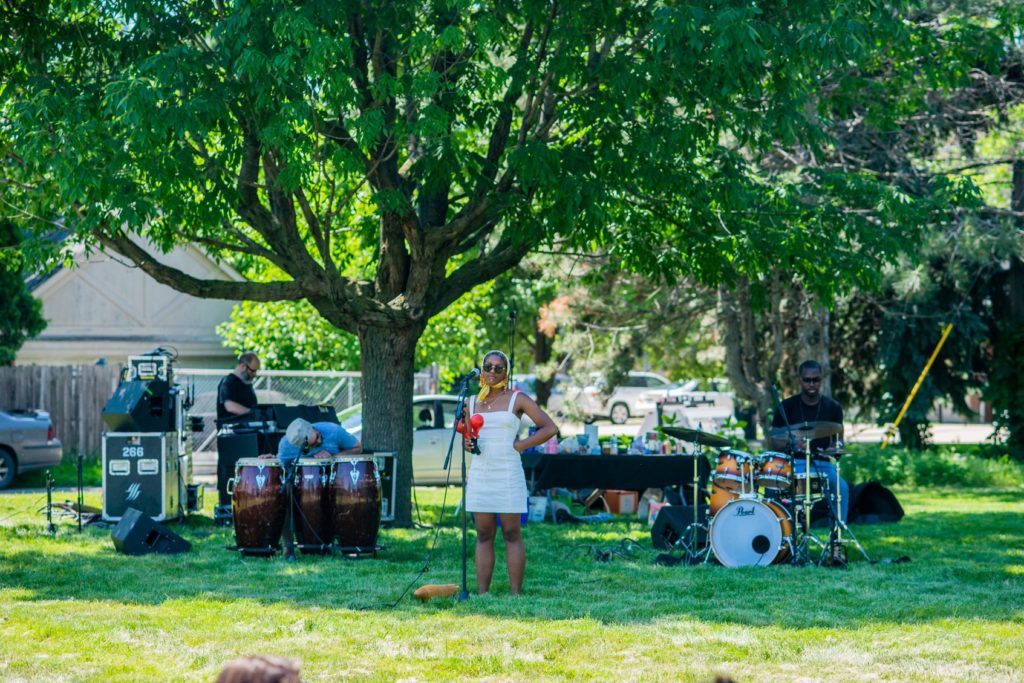
Susana Pilar, Alma (2019). Photo: by Sarah Blanchette
One of the hallmarks of “Material Detroit,” however, was a site-specific installation by Anders Ruhwald, titled Unit 1: 3583 Dubois and occupying an entire apartment in a two-story building in Eastern Market. The permanent installation is a dimly lit, labyrinthine space of six rooms all in black. The space has a sinister quality, but is also quite calming and beautiful in its sheer starkness. Works in black ceramics and molten glass fill most of the rooms, while the wood planks of the walls are carefully charred to a deep, rich charcoal black.
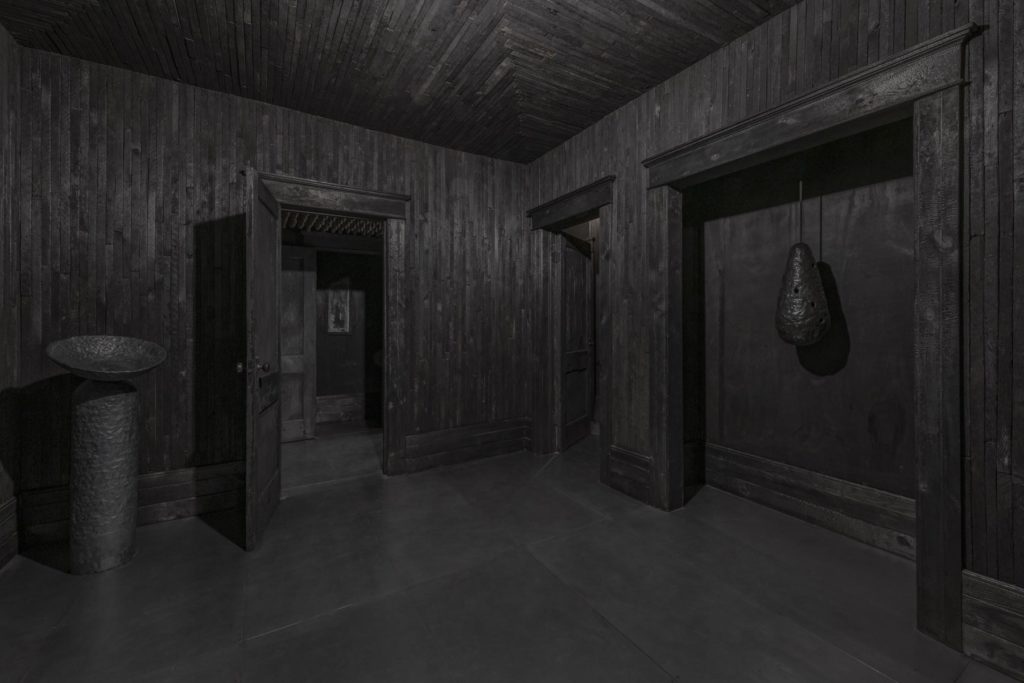
Anders Ruhwald, Unit 1: 3583 Dubois (2016). Installation View. Courtesy Volume Gallery and the artist.
Born in Denmark, Ruhwald moved to Detroit in 2008 at the time of financial crisis in which millions of Americans lost their homes. Housing has a particular place in the American ethos—and particularly in Detroit. Unit 1: 3583 Dubois not only recalls the image of abandoned homes across Detroit from the ’70s to the present, but also stands as a bleak monument to the city’s descent into bankruptcy in 2013. It becomes a keeper of memories of loss, of things forgotten or even erased.
Detroit and its fate has stood as a metonym in the imagination for both America and black America specifically. A final work from Detroit Art Week that stood out for channeling this sense was Helina Metaferia’s performance NOW (2019), which took place on July 18, 2019 at the Museum of Contemporary Art Detroit.
Metaferia, who is an Ethiopian-American artist based in New York, worked with three local Detroit artists to come up with an interpretive performance on the question of what America means to them. She had met her collaborators just days before the 30-minute performance, so the piece was loose, abstract, playful, experimental, and at times very awkward.
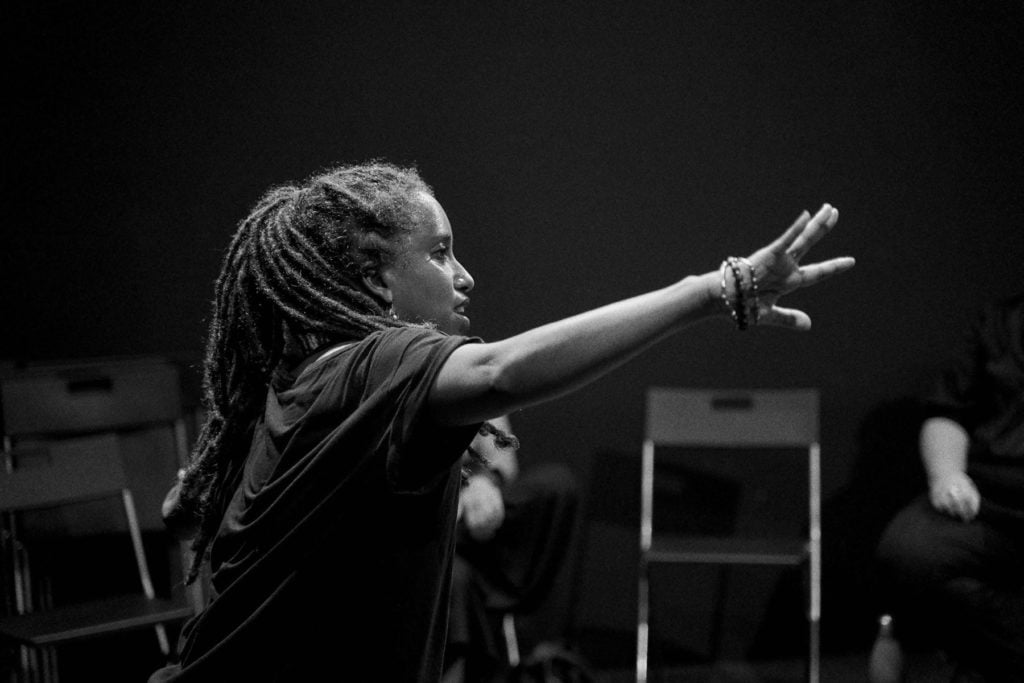
Helina Metaferia, The Now (2019), performance, Museum of Contemporary Art Detroit (MOCAD).
Photo: Aaron Barton. Courtesy of MOCAD.
But that seemed to be the point, to share a space together and feel a little uncomfortable. At one point, Metaferia gingerly walked around the space, microphone in hand, ominously saying, “America is…,” and then pointed the microphone into the face of an audience member and waited for their response. The experience was quite overwhelming. Many of the responses were to be expected considering the crowd: “America is racist,” “America is imperialist,” etc.
But what felt most poignant was the beginning of the piece. Metaferia stood alone, moving around the room yelling, screaming, laughing, gesticulating, and crying. As if she were undergoing a mental break, she cycled rapidly through real moments of glee and despair. Her performance was viscerally evocative of the black American or African Diasporic experience: a sense of blackness that means a constant rejiggering of self and identity in order to survive or navigate systemic racism.
The work also recalled, for me, a line from Taylor Renee Aldridge’s essay in the catalogue for “Landlord Colors.” In it she states that “[b]lackness and its agents… become amorphous, a form that evades a specific place or time. It is all place, all time.” The same can be said of Detroit as a site and as a symbol, as glimpsed through the expansive lens of Detroit Art Week.